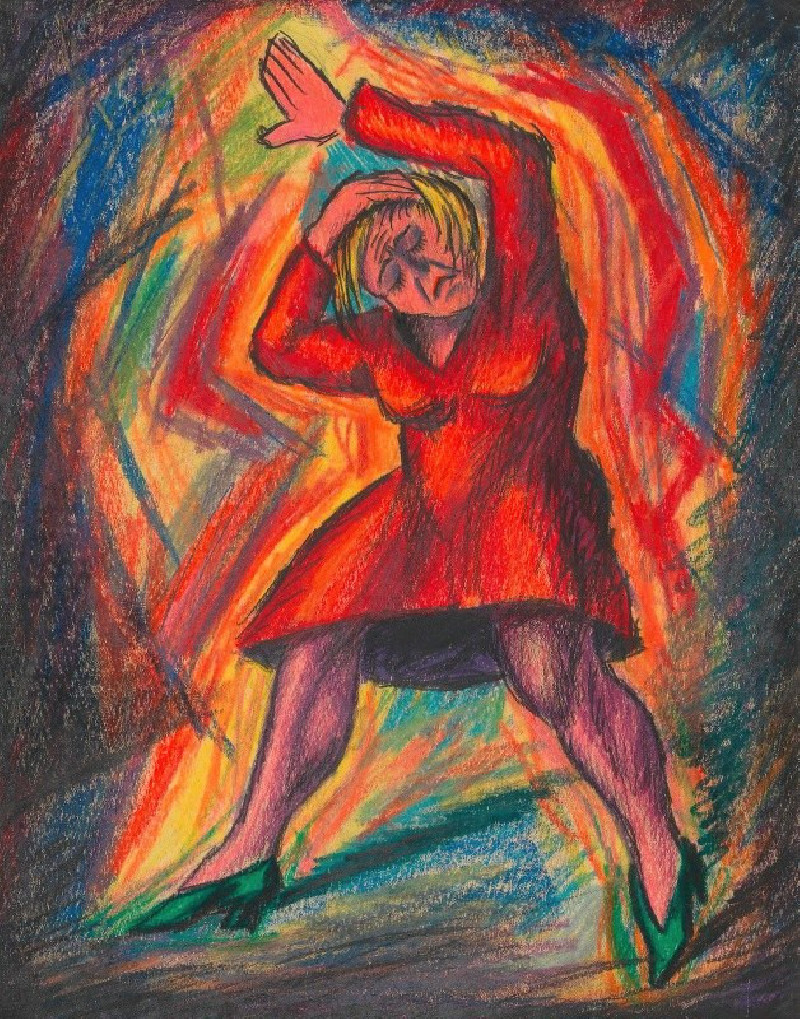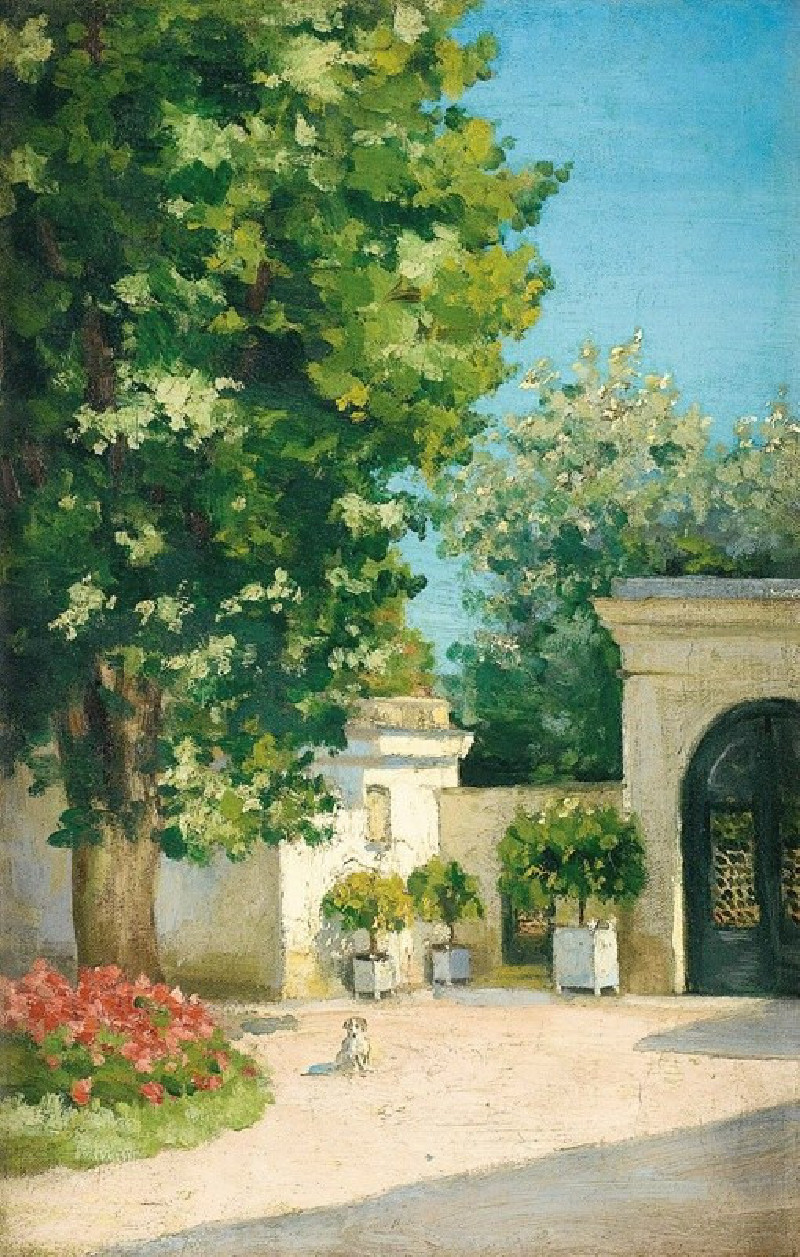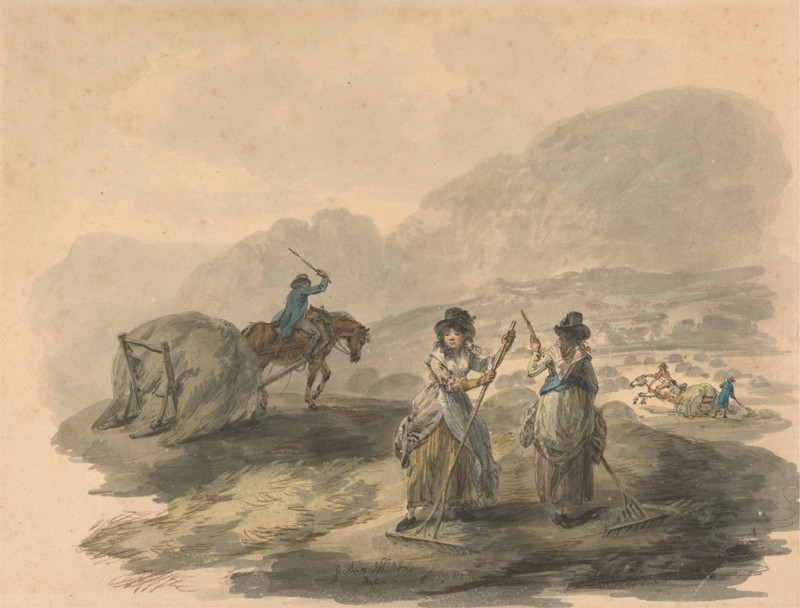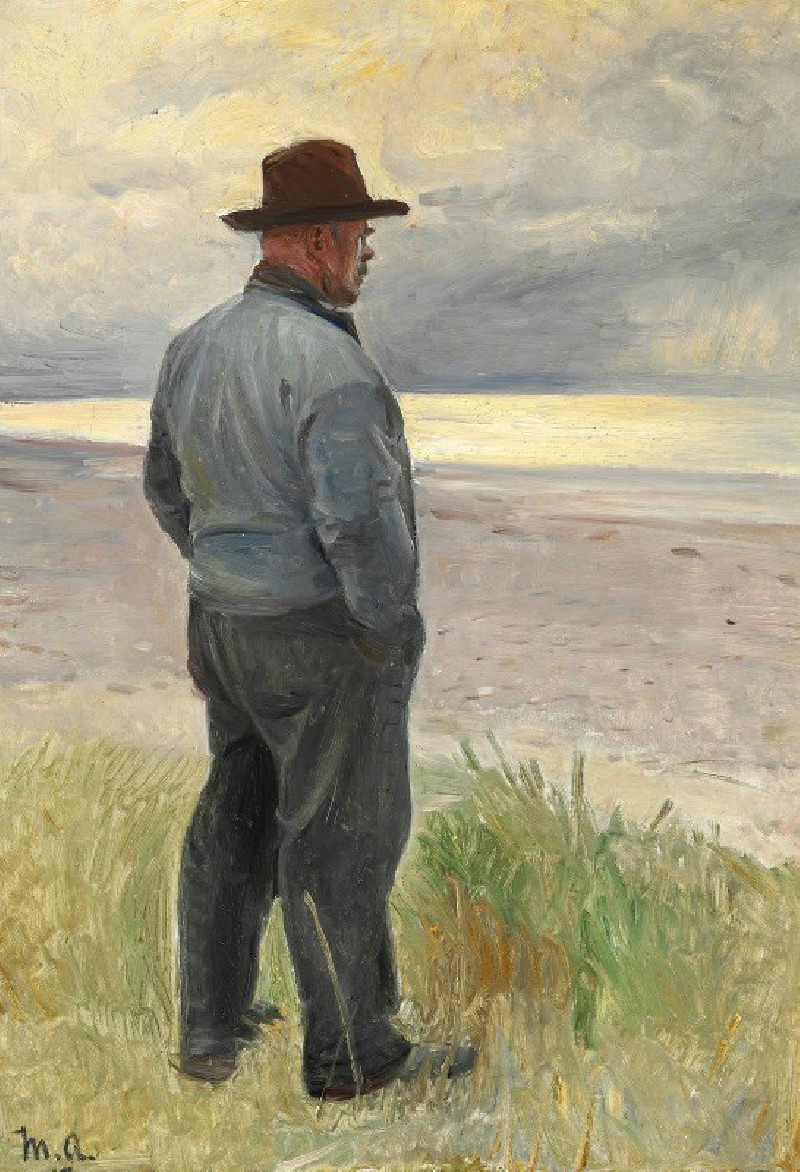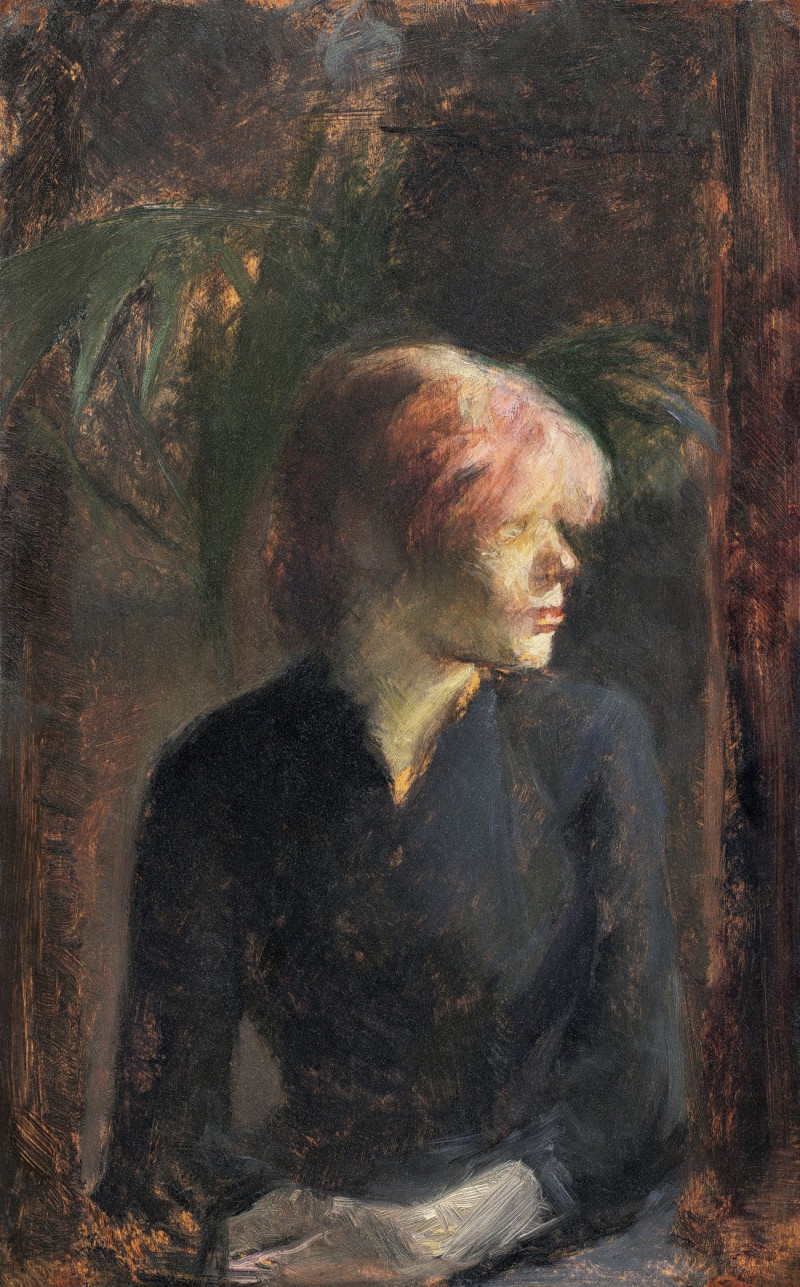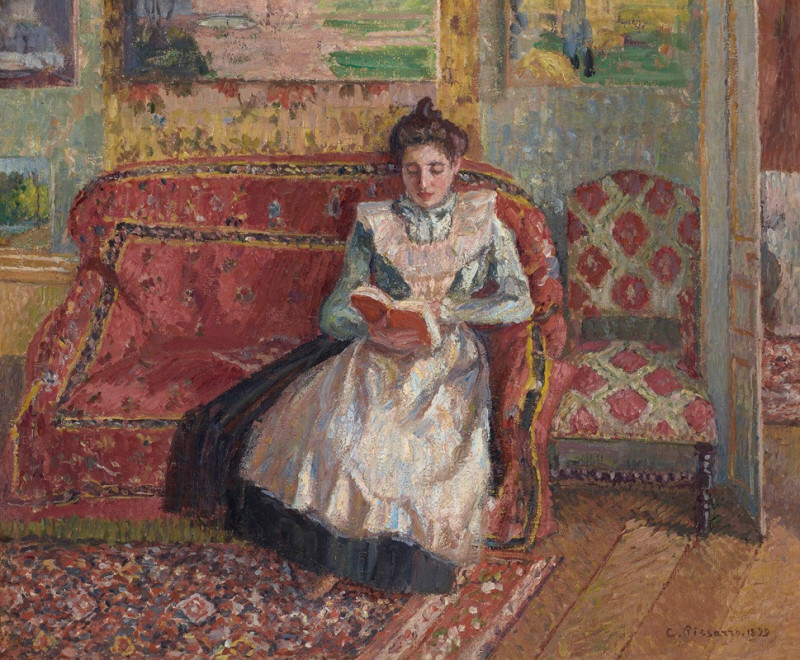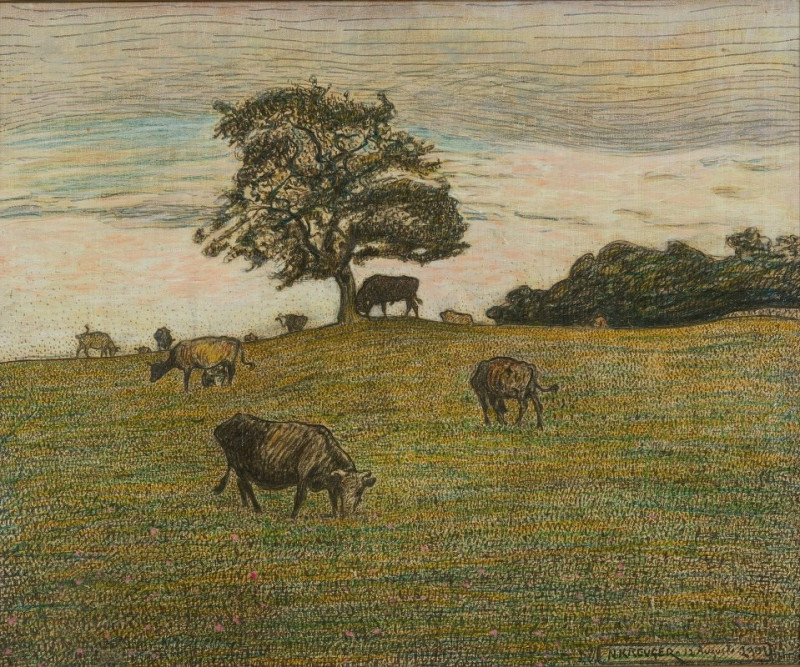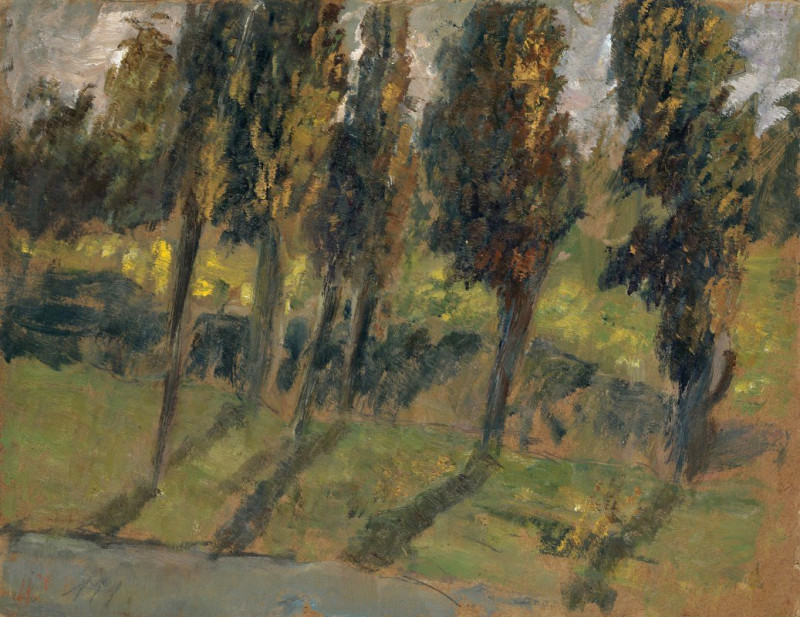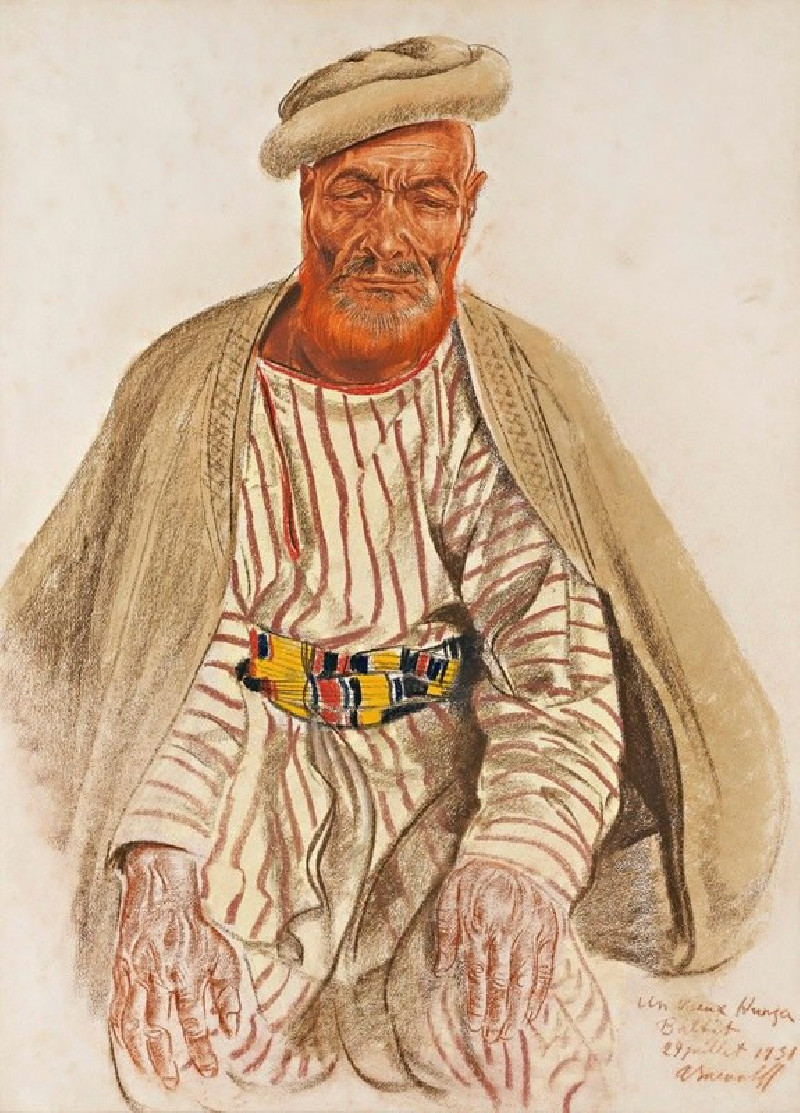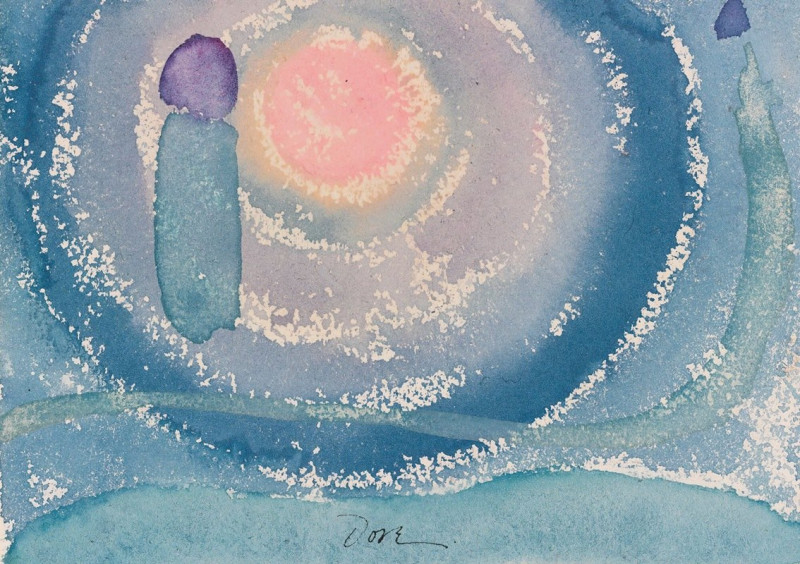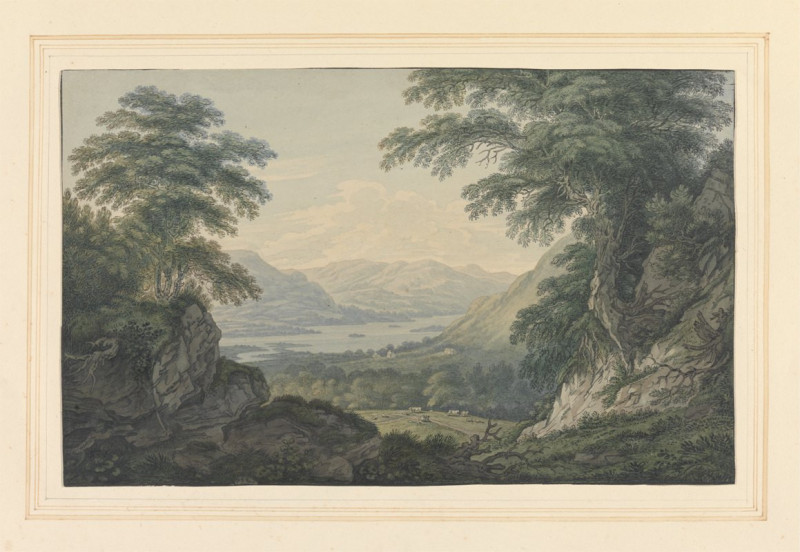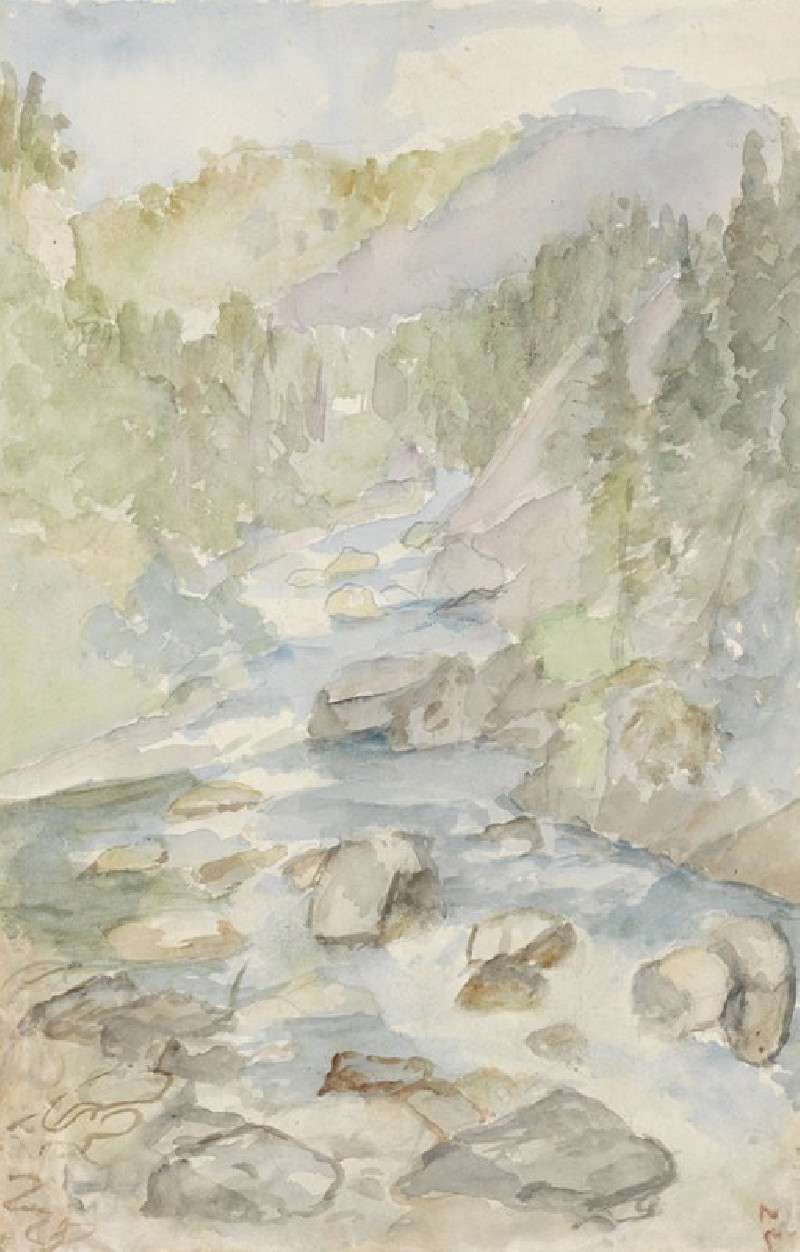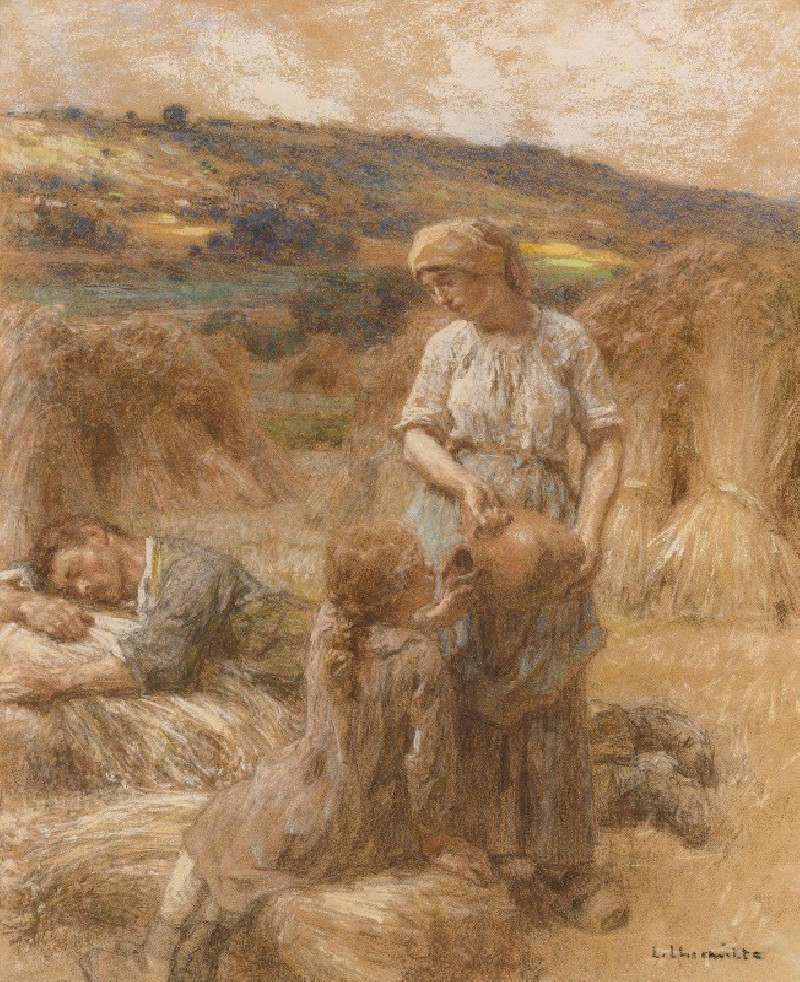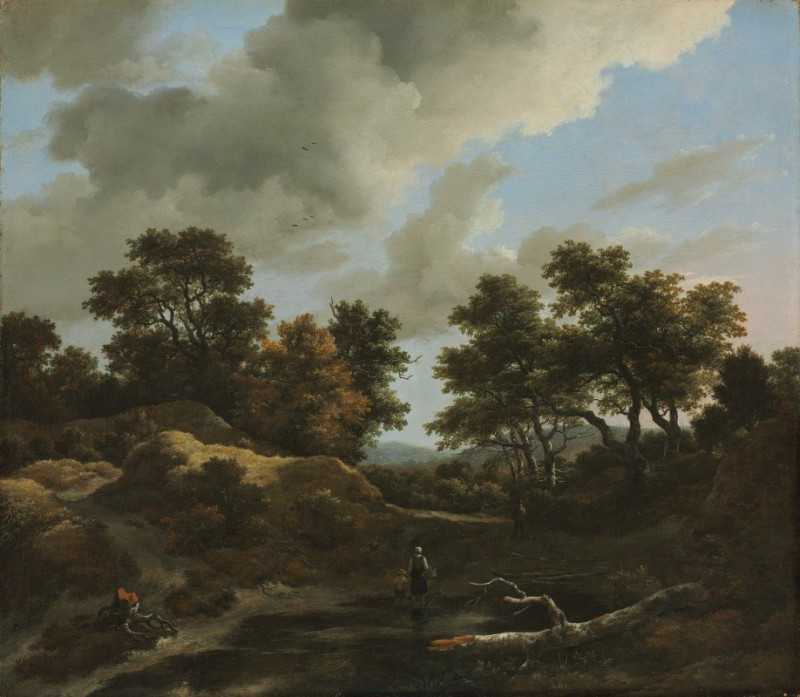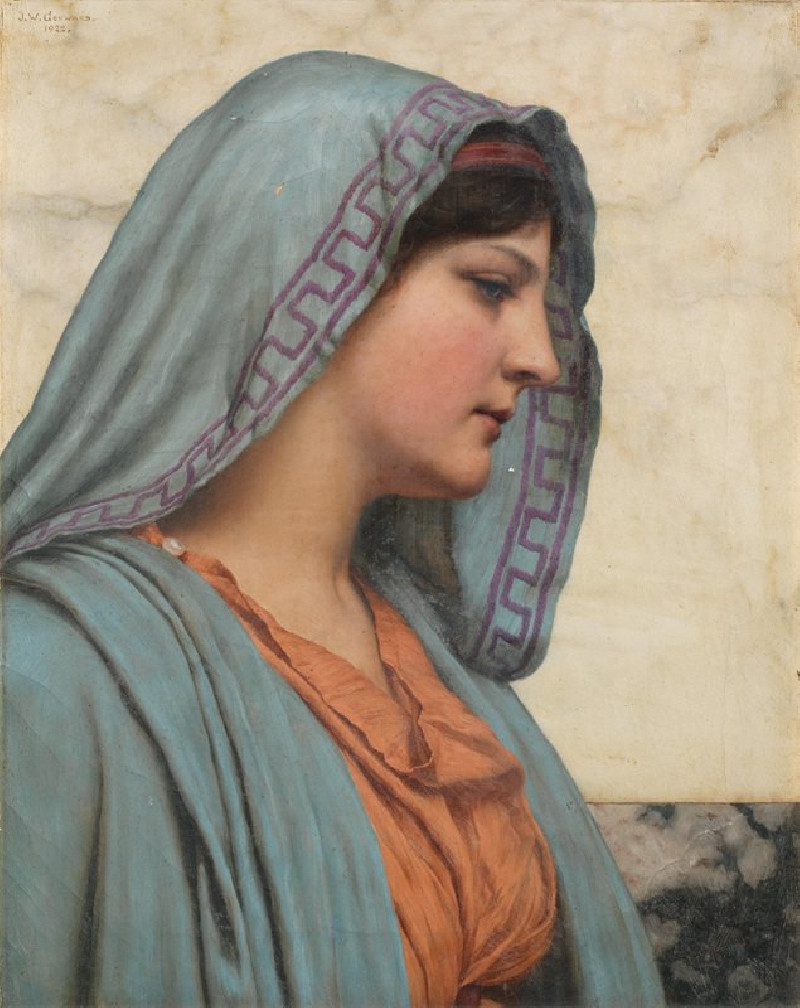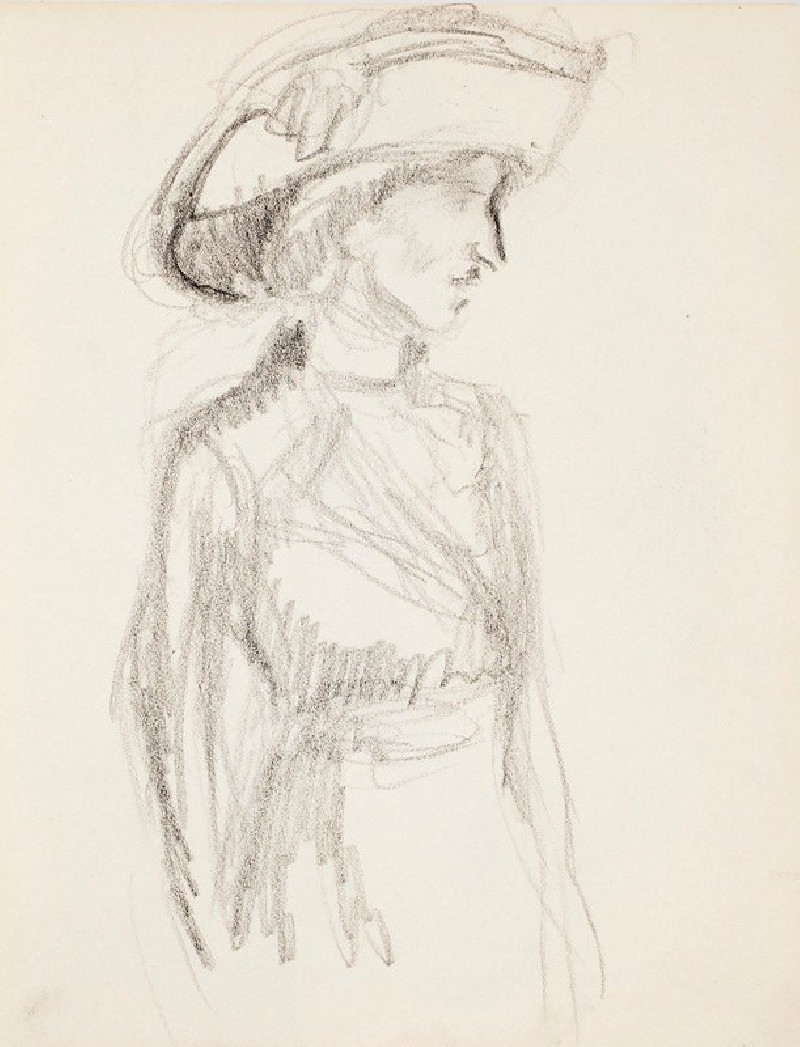Verzweiflung (around 1928)
Technique: Giclée quality print
Recommended by our customers
More about this artwork
“Verzweiflung” (Despair), painted by Karl Wiener around 1928, is a compelling expressionistic piece characterized by its vivid emotional intensity and striking use of color. The painting portrays a figure cloaked in a blazing red garment, their form twisted in an encompassing swirl of vibrant hues. The person appears to be enveloped by or emerging from the dynamic, almost tumultuous strokes of reds, yellows, and blues that create a sense of movement around the central figure.The posture of the figure, with one arm thrown up and the head turned away, conveys a powerful expression of despair and turmoil. This emotional portrayal is heightened by the dramatic, almost aggressive application of color, suggesting a storm of internal and external chaos. The dark contours and sharp lines emphasize the intense emotional state of the subject.Wiener’s work is an example of how color and form can be used to express deep psychological states, making “Verzweiflung” not just a visual experience but an emotional journey for the viewer.

